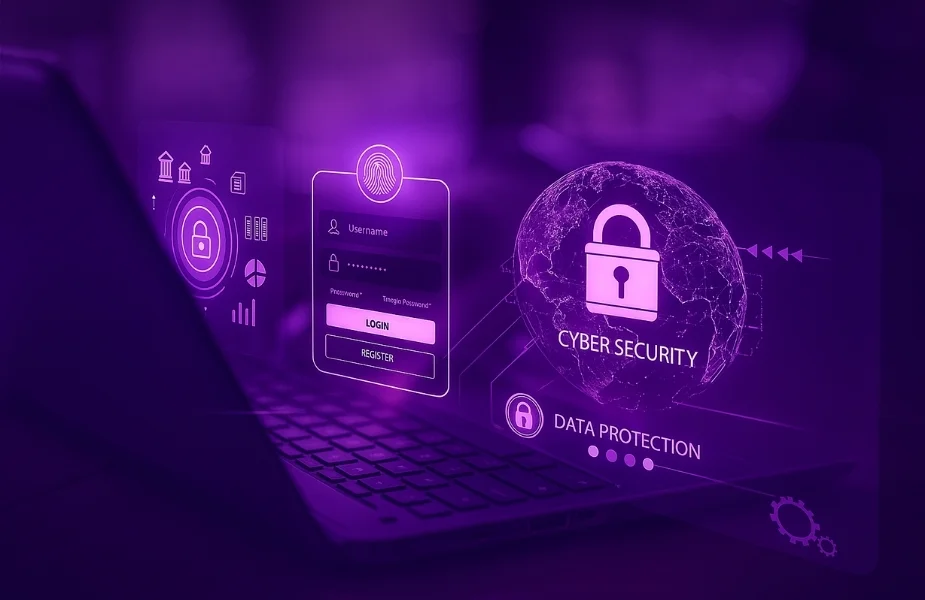Imagine this: You receive a video call from your CEO, urgently instructing you to transfer funds to a supplier. The voice, the face, the mannerisms—everything seems perfectly normal. But what if it wasn’t your CEO? What if it was a deepfake? It isn’t a scene from a sci-fi movie; it’s the reality of today’s AI-driven identity theft. Cybercriminals use deepfake technology to deceive organizations, steal sensitive data, and cause massive financial and reputational damage.
Identity theft has always been a concern, but deepfakes – AI-generated fake images, videos, and voices—have taken deception to a new level. In this blog, we’ll learn how AI is weaponized for scams, share real-world examples, and explore how Protecxo is helping businesses defend against this evolving threat.
How AI is Fueling Identity Fraud
The term “deepfake” was coined in 2017. It refers to hyper-realistic fake content created using artificial intelligence and machine learning. While the technology is impressive, its misuse is alarming. Cybercriminals are now using deepfakes to impersonate executives, employees, or even customers, leading to devastating consequences like financial losses, data breaches, and damaged reputations.
Here are some techniques used in AI-driven identity theft:
-
Deepfake Videos and Voice Cloning: Scammers create incredibly realistic videos and voice recordings to trick employees into approving fraudulent transactions or disclosing sensitive information.
-
Synthetic Identities: Cybercriminals leverage AI to create fake identities that can easily slip past traditional authentication systems.
-
Phishing with Deepfake Content: Fraudsters use AI-generated emails, messages, and even WhatsApp calls to deceive victims into sharing confidential information or authorizing unauthorized transactions.
A 2023 report from IBM Security reveals a shocking statistic. For each incident, AI-driven fraud and identity theft cost organizations an average of $4.45 million.
Real-World Examples of Deepfake Scams in Corporate Environments
1. The $35 Million CEO Deepfake Scam
In 2020, cyberattackers imitated a company’s CEO with a deepfake voice and directed an employee to transfer $35 million to various fictitious accounts. The voice was so convincing that the employee had no reason to doubt its legitimacy.
2. AI-Generated Fraud in the Banking Sector
Deepfake scammers targeted a UK-based bank that mimicked an executive’s voice to authorize a large financial transfer. The attack was detected only after the penny had left the account.
3. Deepfake Job Interviews
In 2022, technology entities accounted for instances where scammers utilized deepfake videos to send in applications for remote employment, seeking to reveal classified information. These impersonators swiped genuine identities to avoid security screening tests.
Security Measures to Counteract Deepfake Threats
AI is rapidly bringing remarkable progress, but it also poses potential threats and risks of misinformation that can impact our lives. Individuals and companies must stay vigilant of AI-powered frauds with proactive security measures. Here’s how one can safeguard against deepfake and identity theft:
-
Multi-Factor Authentication: Use biometric verification, hardware tokens, and behavior-based authentication to strengthen passwords and access controls.
-
Deepfake Detection Scams: Use tools to analyze speech patterns, facial movements, audio analysis, and other errors.
-
Employee Awareness & Training: Educate and train the employees and staff members to identify suspicious communications.
-
Zero Trust Security Framework: Restrict access to sensitive data and ensure continuous verification for every transaction to maintain robust security.
-
Dark Web Monitoring: Monitor stolen credentials and leaked personal information circulating on the dark web.
According to cybercrime statistics, the FBI reports a 300% increase in deepfake-related fraud targeting corporations since 2021. By 2026, deepfake scams can cause over $100 billion in annual losses.
How to Safeguard Your Business
At Protecxo, we understand that AI-driven identity theft requires a human-led defense strategy. Automated security tools can’t always detect deepfake scams, which is why our cybersecurity experts provide:
-
Manual Security Assessments: Our analysts manually review suspicious transactions, communications, and access requests.
-
Dark Web Surveillance: We track and alert you if your organization’s data appears on cybercriminal marketplaces.
-
Deepfake Detection and Fraud Prevention: Leveraging the power of AI-driven analysis combined with human expertise, we swiftly detect manipulated content to minimize risks and prevent potential harm.
-
Cybersecurity Training: Protecxo educates teams and trains them to spot and restrict deepfake attacks.
Conclusion
As companies dive into the world of AI-driven solutions, they need to be ready for the potential pitfalls that come along with it. Deepfake technology is a bit of a double-edged sword – on the one hand, it presents great opportunities, but on the other, it brings serious risks. By keeping themselves informed, implementing strong security measures, and teaming up with experts like Protecxo, businesses can shield themselves from the rising threat of AI-fueled identity theft.
Don’t wait for a crisis to hit. Protect your digital assets now and stay one step ahead of those cybercriminals.




